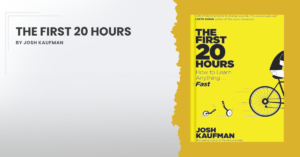Title: Large-Scale Scrum: More with LeSS
Author: Craig Larman and Bas Vodde
Year: 2016
Pages: 368
Large-Scale Scrum by Craig Larman and Bas Vodde is a nice book for organizations seeking to scale their agile practices beyond a single team and never experienced it before.
The book Large-Scale Scrum offers a practical guide to implementing LeSS (Large-Scale Scrum), a framework that helps organizations achieve greater agility, faster delivery, and higher quality.
With a focus on simplicity, transparency, and continuous improvement, More with LeSS provides a case for scaling agile principles across multiple teams and complex systems.
As a result, I gave this book a rating of 7.5/10.
For me, a book with a note 10 is one I consider reading again every year. Among the books I rank with 10, for example, is Dale Carnegie’s How to Win Friends and Influence People.
3 Reasons to read Large-Scale Scrum
Scalability
Learn how to scale Scrum beyond small teams to encompass entire organizations, enabling efficient project management in large-scale environments.
Systems Thinking
Larman and Vodde emphasize the importance of systems thinking, helping readers understand the interconnectedness of teams and their impact on the organization.
Empirical Process Control
Understand the importance of empirical process control in agile development, enabling organizations to adapt to changing requirements and market conditions dynamically.
Book Overview
Large-Scale Scrum is a comprehensive guide to scaling agile practices across multiple teams and complex systems.
Written by Craig Larman and Bas Vodde, two pioneers in the field of agile software development, Large-Scale Scrum offers a practical framework for implementing LeSS, a framework that emphasizes simplicity, transparency, and continuous improvement.
Large-Scale Scrum is rich with real-world examples and case studies, making it easier to understand and apply the concepts.
The authors emphasize the importance of systems thinking, helping readers understand the interconnectedness of teams and their impact on the organization.
The authors also encourage a culture of continuous improvement, emphasizing the importance of learning and adapting to change.
One of the key lessons from the book is the importance of simplifying and decentralizing decision-making, empowering teams to make decisions that impact their work.
The book also emphasizes the importance of focusing on customer value, ensuring that teams are aligned with customer needs, encouraging organizations to create a learning culture, where teams are encouraged to learn and adapt to change.
The book promotes a whole-product mindset, where teams work on the entire product rather than isolated components. The authors also encourage organizations to adopt a systems thinking approach, helping them understand the interconnectedness of teams and their impact on the organization.
Scrum is a popular framework for building complex solutions, emphasizing iterative development, teamwork, and customer-centricity. However, applying Scrum principles to large projects presents unique challenges. Larman and Vodde address these challenges in their book by introducing the concept of Large-Scale Scrum (LeSS).
LeSS offers a framework for scaling Scrum beyond small teams to entire organizations. It focuses on simplifying processes, reducing dependencies, and fostering collaboration across teams. Larman and Vodde advocate for a “less is more” approach, favouring simplicity over complexity in large-scale agile implementations.
From the official LeSS website: LeSS is Scrum applied to many teams working together on one product.
LeSS is Scrum – Large-Scale Scrum (LeSS) isn’t new and improved Scrum. And it’s not Scrum at the bottom for each team, and something different layered on top. Rather, it’s about figuring out how to apply the principles, purpose, elements, and elegance of Scrum in a large-scale context, as simply as possible. Like Scrum and other truly agile frameworks, LeSS is “barely sufficient methodology” for high-impact reasons.
…applied to many teams – Cross-functional, cross-component, full-stack feature teams of 3–9 learning-focused people that do it all—from UX to code to videos—to create done items and a shippable product.
…working together – The teams are working together because they have a common goal to deliver one common shippable product at the end of a common Sprint, and each team cares about this because they are a feature team responsible for the whole, not a part.
…on one product – What product? A broad complete end-to-end customer-centric solution that real customers will use. It’s not a component, platform, layer, or library.
Overall, Large-Scale Scrum book is a valuable resource for professionals in the software development and project management fields, particularly those interested in scaling agile practices, organizational design, and leadership and a practical framework for implementing LeSS, a framework that helps organizations achieve greater agility, faster delivery, and higher quality.
What are the Key Ideas
LeSS Framework
The LeSS framework is a set of principles, rules, and guides that help organizations scale agile practices.
Whole-Product Focus
LeSS emphasizes a whole-product focus, where teams work on the entire product rather than isolated components.
Customer-Centricity
LeSS encourages organizations to focus on customer value, ensuring that teams are aligned with customer needs.
Systems Thinking
LeSS encourages systems thinking, helping organizations understand the interconnectedness of teams and their impact on the organization.
What are the Main Lessons
Simplify and Decentralize
LeSS encourages organizations to simplify their structure and decentralize decision-making, empowering teams to make decisions that impact their work.
Focus on Customer Value
LeSS emphasizes the importance of focusing on customer value, ensuring that teams are aligned with customer needs.
Create a Learning Organization
LeSS encourages organizations to create a learning culture, where teams are encouraged to learn and adapt to change.
Adopt a Whole-Product Mindset
LeSS promotes a whole-product mindset, where teams work on the entire product rather than isolated components.
Embrace Systems Thinking
LeSS encourages organizations to adopt a systems thinking approach, helping them understand the interconnectedness of teams and their impact on the organization.
Continuously Improve
LeSS advocates for continuous improvement, where teams are encouraged to learn and adapt to change.
My Book Highlights & Quotes
Crucially, these Teams are feature teams—true cross- functional and cross-component full-stack teams that work together in a shared code environment, each doing everything to create done items.
LeSS shows how to handle large and complex development. Self-managed teams are not just tiny curiosities. They can manage vast international operations of great technical complexity. The practices are not only scalable, unlike bureaucracy, they are scalable without sclerosis.
LeSS continues the process of fundamentally reinventing management by incorporating the hard-won lessons of experience over more than a decade in scaling the management methods of Agile and Scrum. It shows how to cope with immense complexity by creating simplicity.
And like Scrum, LeSS is not a process or a technique for building products. Rather, it is a framework within which processes and techniques can be adapted to meet the needs of the particular situation. It aims to make clear how product management and development practices can enable continuous improvement that adds value to customers.
Rather than providing fixed answers, LeSS provides the starting point for understanding and adopting its deeper principles. Instead of asking, “How can we do Agile at scale in our complex hierarchical bureaucracy?” it asks a different and deeper question is, “How can we simplify the organization, and be Agile?”
In conclusion, Large-Scale Scrum by Craig Larman and Bas Vodde offers a comprehensive guide to scaling Scrum for large organizations.
Through practical insights, case studies, and actionable strategies, Large-Scale Scrum readers with the knowledge and tools needed to navigate the complexities of large-scale agile adoption successfully.
Whether you’re a seasoned agile practitioner or a newcomer to Scrum, Large-Scale Scrum book provides invaluable guidance for driving organizational agility and achieving business success.
I am incredibly grateful that you have taken the time to read this post.
Do you want to get new content in your Email?
Do you want to explore more?
Check my main categories of content below:
- Agile
- Blog
- Book Notes
- Career
- Leadership
- Management
- Managing Yourself
- Productivity
- Project Management
- Technology
- Weekly Pulse
Navigate between the many topics covered in this website:
Agile Art Artificial Intelligence Blockchain Books Business Business Tales Career Coaching Communication Creativity Culture Cybersecurity Design DevOps Economy Emotional Intelligence Feedback Flow Focus Gaming Goals GPT Habits Health History Innovation Kanban Leadership Lean Life Managament Management Mentorship Metaverse Metrics Mindset Minimalism Motivation Negotiation Networking Neuroscience NFT Ownership Parenting Planning PMBOK PMI Politics Productivity Products Project Management Projects Pulse Readings Routines Scrum Self-Improvement Self-Management Sleep Startups Strategy Team Building Technology Time Management Volunteering Work
Do you want to check previous Book Notes? Check these from the last couple of weeks:
- Book Notes #123: The Personal MBA by Josh Kaufman
- Book Notes #122: The First 20 Hours by Josh Kaufman
- Book Notes #121: A World Without Email by Cal Newport
- Book Notes #120: Storynomics by Robert McKee and Thomas Gerace
- Book Notes #119: Getting Things Done by David Allen
Support my work by sharing my content with your network using the sharing buttons below.
Want to show your support tangibly? A virtual coffee is a small but nice way to show your appreciation and give me the extra energy to keep crafting valuable content! Pay me a coffee:





